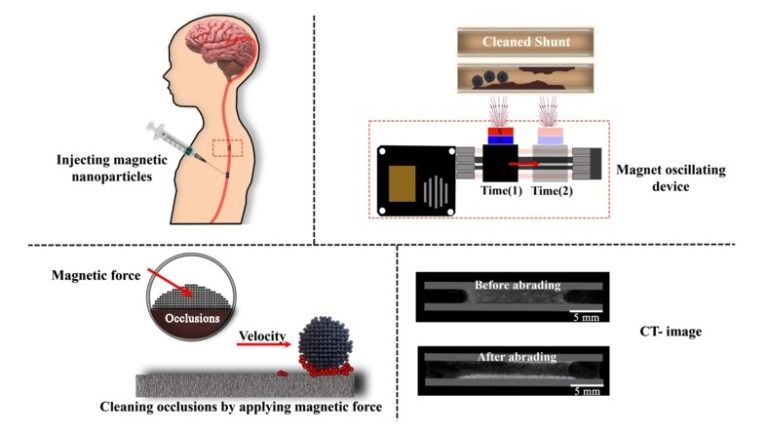Shunts are internal medical devices used to drain excess fluids from organs, but calcification deposits in the shunt walls can cause them to fail and must be replaced frequently. Traditional implantation procedures for shunts are invasive, which carries the risk of infection and longer patient recovery. To address this issue, we propose a new, non-invasive technique using magnetic nanoparticles (MNPs) to eliminate calcification in shunts.
Our prototype device successfully abraded the calcification layer within a shunt channel using MNPs guided by a moving magnetic field (microswarm) with intensities ranging from 0.1 to 0.3 T and velocities between 1 and 12 cm/s. The average size of the nanoparticles was 45 nm. As the magnetic intensity increased, the time needed to remove the calcification layer was reduced by 33%. A direct link between the magnetic field oscillation velocity and the calcification layer’s removal is observed. However, for velocities higher than (12 cm/s), the rate of calcification removal decreased as the nanoparticles could no longer follow the field.
We examined the modes of movement and indentation depth created by the nanoparticles using predictive modelling. We evaluated two modes of motion: sliding and rolling. The results showed that the sliding mode was the dominant mode of motion. A satisfactory agreement with the experimental data was observed. Next, we considered five contact models to calculate the indentation depth: Hertz, Lundberg, Dowson, Nikpour, and Hoeprich. The Hoeprich theory provided the most accurate result, with an error of 12.1%. Finally, simulation results showed the maximum force required to begin the movement of the particles (0.15 N) and the magnetic field intensity (0.3 T).

